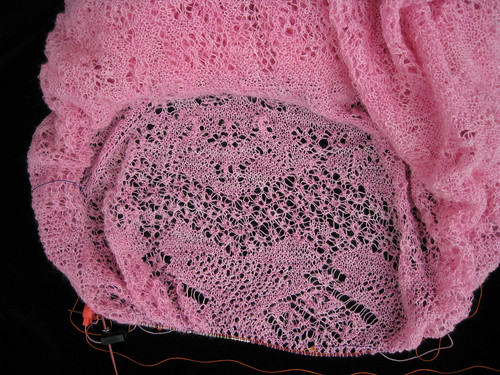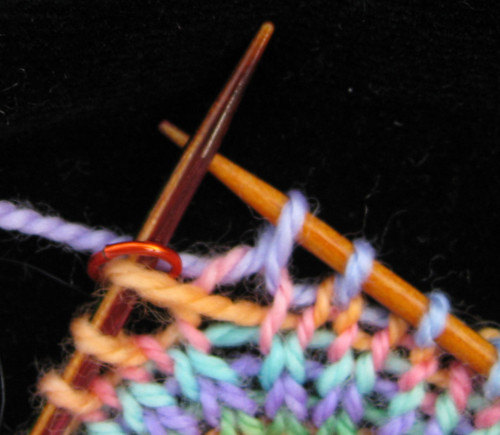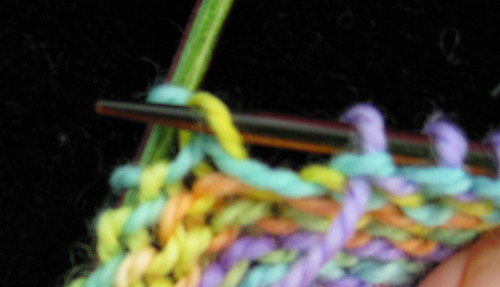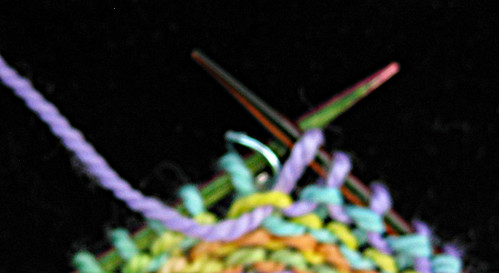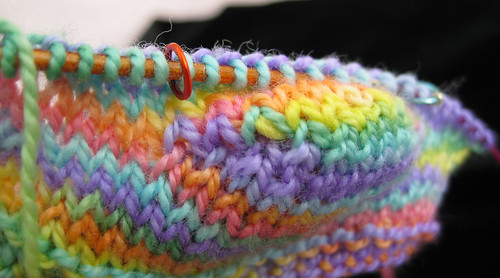King Bat Shawl
I slogged my way to the finish line of the shawl body a few days ago. As you might imagine, I am very tired of pink. I have miles of edging to knit on before the thing is completed, but I am putting it aside for a while to let my Pink Receptors recover from extended stimulation. Cindersall's reversal of the crown motif was masterful, and I think it looks better than the original.
Honeysuckle Shawl/Sweater
Having carefully placed the Bat shawl on the bottom of my UFO pile, I decided to treat myself with my rendition of the Honeysuckle shawl/sweater thing, which appeared in Issue #6 of The Knitter.
This design is beautiful--elegant, graceful, and feminine. I had to read the directions four times because I simply couldn't believe that the designer would actually take a round shawl and convert it to flat knitting. Thus, the reader is instructed to knit across the pattern row, turn, purl back, and then, when the piece is finished, sew up the back seam. Nah. I am knitting it in the round like a grown-up.
For the sleeves, the original design calls for casting off 40 stitches one one row and then casting on 40 stitches in the next row. The sleeves are knitted separately and then sewn into the gap. Why make an ugly seamline at the shoulder and force the knitter to do even more sewing? Instead, I will knit a contrasting piece of yarn over 40 stitches. When I am ready to do the sleeve, I will carefully undo the contrasting yarn, pick up the stitches around the armhole, and knit the sleeves from the top down to the wrist.
In an incredible display of foresight, I decided to bead only the sleeves and the front side of the sweater. I realized that if I beaded the entire thing, I would wear the sweater once, wonder why my back felt like llittle glass beads were digging into it, slap my forehead, and put the thing away forever.
I am using Hamanaka mohair/silk Parfait yarn and some pretty beads that have been languishing in the closet for a while. Harry finds the piece rather restful. Too restful. I have to shake him out of the thing every time I want to work on it.
Spinning
I love Corgi Hill batts. I love them to pieces. I want to make an entire room out of Corgi Hill batts and live there. While I am busy accumulating the raw materials for the Corgi Hill Extension, I actually spun some up. Here's a neat ball of Navajo-plied merino/silk:
It will probably become a scarf for Kyoko-san if Harry doesn't filch it and bury it in his stash drawer.
And here's what's currently on the spindle:
